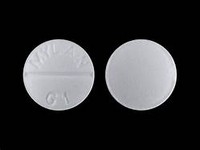Glipizide
CLINICAL USE
Non-insulin dependent diabetes mellitus
DOSE IN NORMAL RENAL FUNCTION
Initially 2.5–5 mg daily, adjusted according to response; maximum 20 mg daily; up to 15 mg may be given as a single dose before breakfast; higher doses divided
PHARMACOKINETICS
DOSE IN RENAL IMPAIRMENT
GFR (mL/MIN)
DOSE IN PATIENTS UNDERGOING RENAL REPLACEMENT THERAPIES
IMPORTANT DRUG INTERACTIONS
Potentially hazardous interactions with other drugs
ADMINISTRATION
Reconstition
–
Route
Oral
Rate of Administration
–
Comments
–
OTHER INFORMATION
Company does not recommend the use of Glibenese in patients with renal insufficiencyRenal or hepatic insufficiency may cause elevated blood levels of glipizide (increased risk of serious hypoglycaemic reactions).
